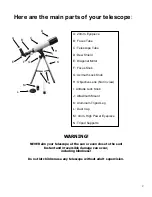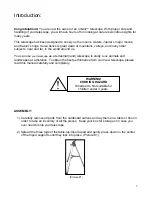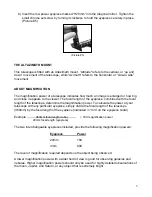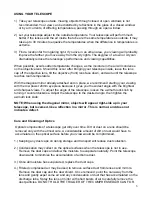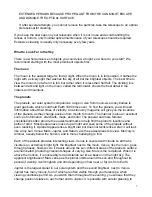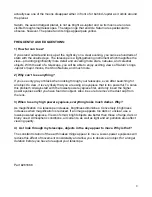
5
8.) Insert the low power eyepiece marked “H20mm” into the diagonal mirror. Tighten the
small chrome set screw by turning it clockwise to hold the eyepiece securely in place.
(Picture #5)
(Picture #5)
THE ALTAZIMUTH MOUNT
This telescope is fitted with an Altazimuth mount. “Altitude" refers to the vertical, or “up and
down” movement of the telescope, while "Azimuth" refers to the horizontal, or “side-to side”
movement.
ABOUT MAGNIFICATION
The magnification power of a telescope indicates how much an image is enlarged or how big
and close it appears to the viewer. The focal length of the eyepiece, combined with the focal
length of the telescope, determine the magnification power. To calculate the power of your
telescope with any particular eyepiece, simply divide the focal length of the telescope
(360mm) by the focal length of the eyepiece (indicated in “mm” on the eyepiece collar).
Example
: 360mm focal length (tube) = 18X magnification power
20mm focal length (eyepiece)
The two interchangeable eyepieces included, provide the following magnification powers:
Eyepiece
Power
20mm
18X
4mm
90X
The level of magnification required depends on the object being observed.
A lower magnification power with a wider field of view is good for observing galaxies and
nebulae. Higher magnification powers should only be used for highly detailed observations of
the moon, Jupiter, and Saturn, or any object that is extremely bright


